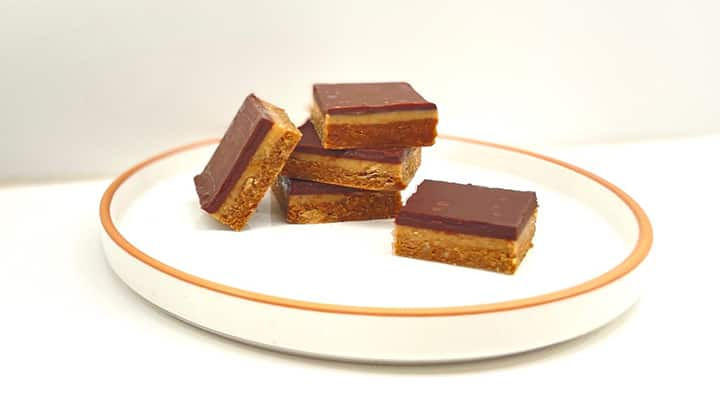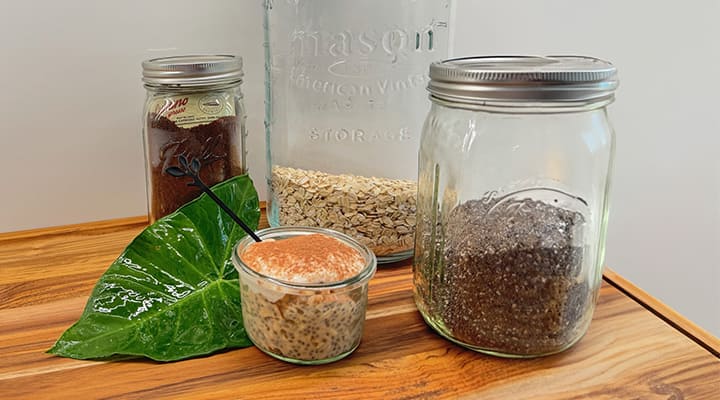
Vegetable Stock From Scraps: Zero Waste Recipe
Published: April 2022
Isn't it great when you can make something out of nothing? Even better, what if the something you make is tastier and healthier than what you can buy in the store? Homemade vegetable stock is a wonderfully easy and zero-waste recipe that you can make from your vegetable scraps!
This rich and tasty stock gets its flavor from simmering any scraps you have from cooking, such as peels, stalks, and stems from carrots, celery, fennel, leeks, onions, garlic, and more. Once you have made this delicious basic vegetable stock, you can use it in soups, sauces or even oil-free or low-oil sautés.
Say goodbye to commercially prepared bouillons and stocks forever. You will save money, eat healthier, and be kinder to the earth by producing less waste.
Vegetable stock vs. broth
Classically a stock is made from simmering animal bones for several hours. Since this recipe is for a basic vegetable stock, we instead simmer vegetable scraps. Simmering the veggie scraps for hours creates a deeper and more fortified liquid than a typical veggie broth. A veggie broth is much thinner and made in a shorter time than a stock. This recipe is a veggie stock because we will simmer it for three hours, producing a deep and richly flavored liquid.
What can I do with vegetable scraps?

When preparing weekly meals, there are lots of scraps to deal with, particularly if you eat a lot of vegetables and fresh herbs. Carrot and potato peelings, vegetable ends and tips, tough celery and leek stalks, and herb stems from rosemary, parsley and thyme are all by-products of cooking.
These vegetable byproducts do not need to be thrown away. Besides the obvious solution of composting, making vegetable stock is another great answer to the problem of food waste. The stock helps you get the benefits of these fresh vegetables, such as the liver-supporting power of garlic or the prebiotic punch of onions. Save all the peels and trimmings from your meal prep and put them into sealable freezer bags or airtight containers in the freezer until there's enough to make this recipe. Then use your homemade stock to add flavor to all your favorite recipes that call for stock, broth or bouillon.
Can you use vegetable peels for stock?
Vegetable peels are an excellent addition to vegetable stock. Take all your veggie byproducts—such as peels and ends from onions, garlic, potatoes, parsnip, carrots, fennel, celery and zucchini—and save them for your stockpot. These will help make your stock tasty, cost-efficient, and low waste.
What other kitchen scraps can be used to make stock?

Peels and ends are not the only veggie scraps that go well in a stock. Mushrooms, corn cobs, tough stalks, and stems are all welcome stock additions. You may be surprised to learn that lemon rinds are also a great flavor enhancer.
I love adding all the stems and herb ends that would normally get wasted into my stocks. Likewise, dried leftover thyme, unused green onions, and sad carrots all get a new life in my homemade vegetable stock.
What should you not put in vegetable stock?
Although vegetable stock is a great way to use up veggie scraps, there are a few things that you should not use.
- To avoid a bitter taste, leave the broccoli, Brussels sprouts, and cauliflower stems for other zero-waste recipes. These cruciferous vegetables are breast health superstars and are good in dishes like grated slaws.
- Any vegetable with a strong flavor will dominate your stock. An example of this is asparagus. Unless you are making an asparagus soup or risotto with the stock, the flavor is too strong. Instead, stick with milder vegetables like celery, carrots, mushrooms, cauliflower and others.
- Another vegetable to avoid is beet. Beets are great in a healthy juice or smoothie, but they aren't good in this recipe, because the stock's color and flavor will be affected greatly.
Explore Our Best Digestive Health Supplements
How to make vegetable stock from scraps
To make zero-waste vegetable stock from scraps, you must save all the things that you would normally throw away. I like to save mine in a large airtight container in the freezer that I add to daily. This way, once my container is full, I know it is time to make a new pot of stock.
Note: this recipe is dairy-free, gluten-free, nut-free and soy-free.
Vegetable stock ingredients

The ingredients list for veggie stock is not written in stone. That is the beauty of stock making! For this batch, I used onion, garlic and carrot peels, celery ends and leaves, tough kale stems, dried out thyme, green onion ends, parsley stems, pepper innards, and lemon peels. Your recipe really depends on what kinds of scraps you have on hand. To get wonderful vegetable stock with whatever scraps you have, follow this easy formula.
- 6-8 cups of vegetable scraps
- Water to cover, plus 2 cups water
- 6 whole black peppercorns
- Bay leaf (to taste; I use 3 to 4)
Preparation
The preparation of vegetable stock couldn't be easier. It is an extremely low-maintenance recipe that has fantastic results.
- First, add the scraps to a large pot and cover them with water plus two more cups.
- Add the peppercorns and bay leaves to the pot.
- Bring the pot to a boil, then turn down to a low simmer for three hours.
- Hourly, check the stock, skim off any foam or "scum" that can rise to the surface, and dispose of it.
- Once the stock is finished, strain the stock thru a fine mesh strainer or colander to take out all the scraps (which can be added to your compost). Be careful not to burn yourself.
- Let the stock cool completely, then store in a sealed container in the refrigerator for seven days, or in the freezer for up to three months.
Tip: Pour the stock into ice cube trays and freeze to make little flavor infusions for quick sauté dishes!
Does vegetable stock go bad?

Like all food, vegetable stock will go bad with time. With proper storage, it should keep for a week in the fridge or up to three months in the freezer. As with all foods, signs of spoilage include a sour smell or taste, a fermented smell, or bubbling.
Why make vegetable stock? 3 Health Benefits
One of the best reasons to make your own vegetable stock is for its health benefits.
- Commercially made meat-based stocks and bouillons can have ghastly amounts of sodium and additives. We all know that too much sodium can impact our health—which is why making your own veggie stock is a heart-healthy low-sodium alternative!
- Vegetable stocks can be a great replenishing source of electrolytes and hydration.
- Some even tout vegetable stock as wonderful digestive support, and stock or broth is commonly recommended when your stomach is feeling particularly sensitive.
Do I need to take digestive supplements if I eat vegetable stock?
While vegetable stocks can add to your vitamin and prebiotic consumption, the nutritional profiles will vary greatly depending on the veggies you add. Vegetable stock is easy to digest, but if you need additional digestive support, consider a probiotic supplement. Life Extension's best-in-class FLORASSIST® GI with Phage Technology is a liquid vegetarian capsule that offers maximum digestive benefits. Its blend of seven probiotic strains helps maintain a healthy microbiome balance in the intestines, encourages proper nutrient absorption and more.
Not sure you need prebiotics or probiotics? This supplement quiz could help you decide!
References
- Fernández-López, Juana et al. "Vegetable Soups and Creams: Raw Materials, Processing, Health Benefits, and Innovation Trends." Plants (Basel), December 2020, https://www.ncbi.nlm.nih.gov/pmc/articles/PMC7764940/
- Watson-Tara, Marlene. "Why Vegetable Mineral Broth is Healthier Than Bone Broth." T. Colin Campbell Center for Nutrition Studies, November 2018, https://nutritionstudies.org/why-vegetable-mineral-broth-is-healthier-than-bone-broth/
- Zlotorzynski, Samantha, MA, RDN. "Signs of Food Spoilage." PennState Extension, October 2021, https://extension.psu.edu/signs-of-food-spoilage
- "Sodium." Centers for Disease Control and Prevention, December 2021, https://www.cdc.gov/heartdisease/sodium.htm
Always be in the know!
Access the latest deals, wellness news, expert health tips & more!





